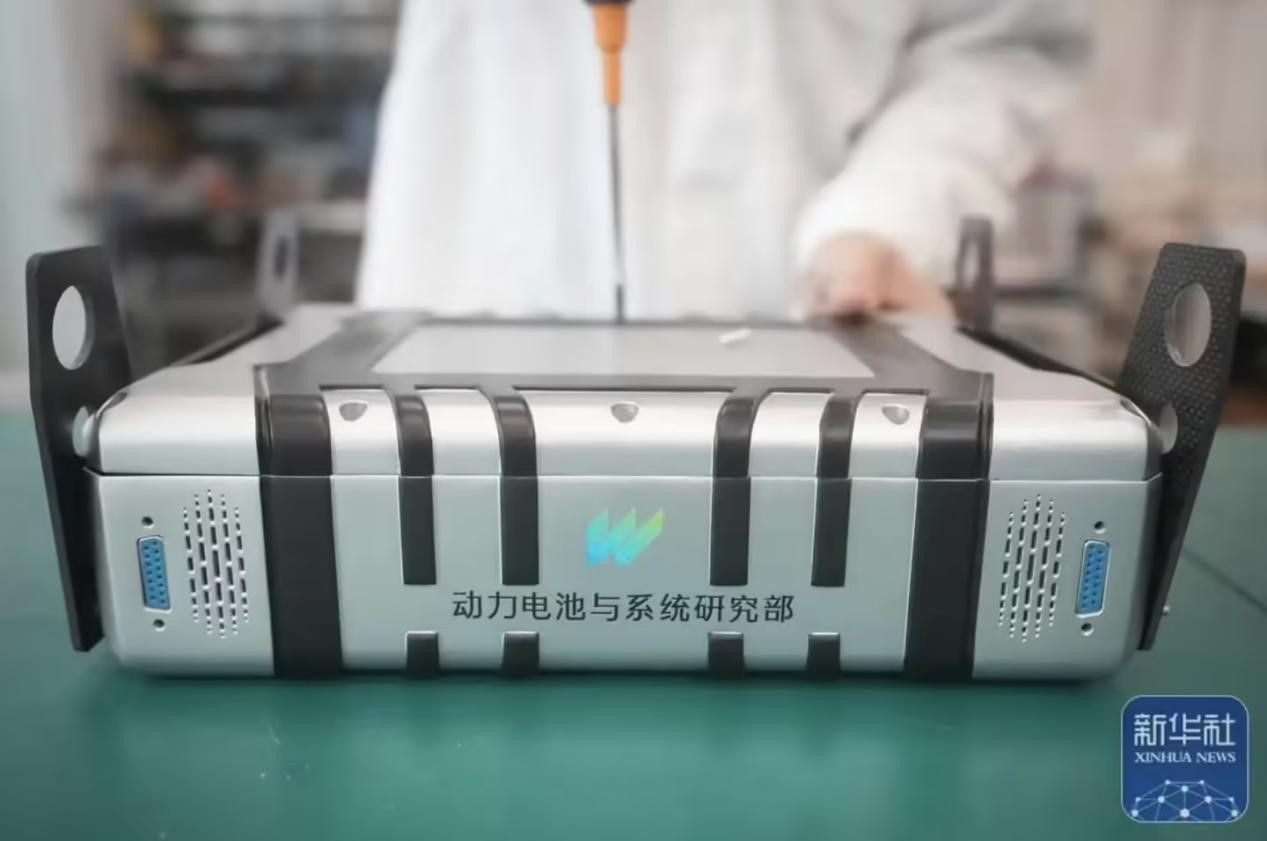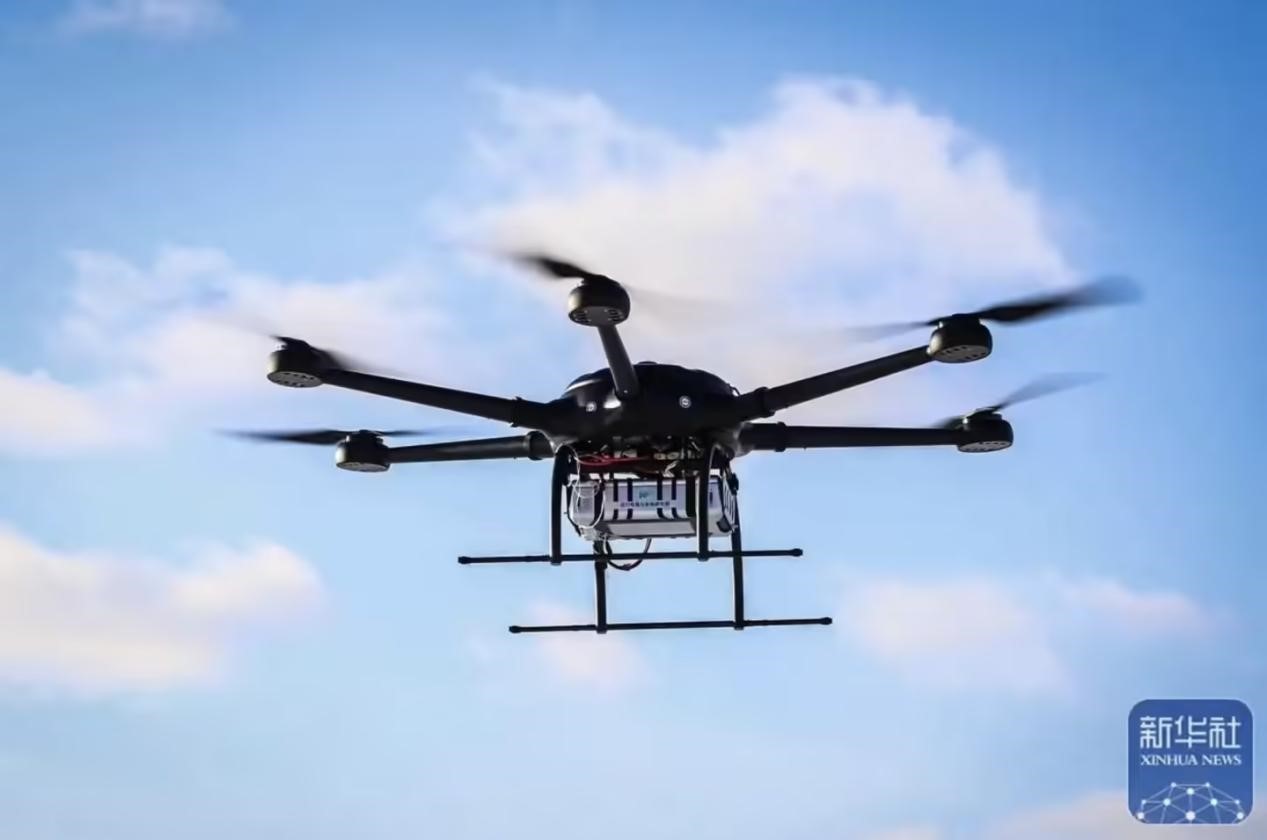In the context of the rapid development of global science and technology, the application scope of drones continues to expand, from agricultural monitoring, environmental monitoring to polar scientific research, and its flexibility and efficiency make it an indispensable tool in many fields. However, the low temperature environment has seriously restricted the performance of lithium batteries, which has become an important bottleneck restricting the application of UAVs in extreme environments. Recently, the new "ultra-low temperature and high specific energy lithium battery" developed by Chen Zhongwei's team at the Dalian Institute of Chemical Physics, Chinese Academy of Sciences has made a breakthrough, successfully helping the UAV to fly stably in the environment of minus 36 °C, providing revolutionary technical support for the application of UAVs under extremely cold conditions.
Breakthrough in low-temperature lithium battery technology
Traditional lithium batteries are usually stable in the temperature range of 0°C to 40°C, but in the environment below 0°C, the viscosity of the electrolyte increases and the electrode reaction rate decreases, resulting in a sharp increase in the internal resistance of the battery, a decrease in discharge capacity, a significant reduction in battery life, and may even fail to start. In the extremely cold environment, the reliability of existing lithium batteries seriously limits the application scenarios of UAVs.
In order to solve this problem, Chen Zhongwei's team adopted an innovative electrolyte formulation, combined with high-efficiency low-temperature solid-state electrolyte materials, and specially modified the anode materials to maintain a high migration rate of lithium ions in a low-temperature environment. This technological breakthrough enables the new lithium-ion battery to maintain a stable electrical output in a temperature range of -40°C to 50°C. In addition, the battery has an adaptive thermal management system that effectively reduces energy loss in low temperature environments.
Experimental data show that the battery capacity retention rate of the battery exceeds 85% under the condition of minus 40 °C, which far exceeds the performance index of the existing low-temperature lithium battery, and the endurance attenuation rate in the environment of minus 36 °C is controlled within 10% of the normal temperature state. This breakthrough provides a reliable guarantee for UAVs to perform long-term, high-intensity missions in extremely cold environments.

Figure: A new type of "ultra-low temperature and high specific energy lithium battery" developed by Chen Zhongwei's team from Dalian Institute of Chemical Physics, Chinese Academy of Sciences
Field Testing: Reliability Verification in Extremely Cold Environments
In order to verify the practical application performance of the new ultra-low temperature and high specific energy lithium battery, the research team conducted drone measurements in Mohe City, Heilongjiang Province, the northernmost part of China. At an extremely low temperature of minus 36 °C, the six-rotor drone equipped with the battery successfully completed a series of flight tasks such as take-off, hovering, high-speed cruise and fine operation.
The test data shows that:
1. The start time of the drone in the extremely cold environment is less than 3 seconds different from that in the normal temperature environment.
2. The voltage output is stable during the flight, and there is no power fluctuation or sudden power failure.
3. The battery life in low temperature environment is about 50% longer than that of traditional lithium batteries.
4. In the process of performing complex tasks, the energy loss is optimized, so that the drone does not need to return to home frequently for charging.
These test results show that the reliability, endurance and safety performance of the new low-temperature lithium battery in extremely cold environments have reached the industry-leading level, laying a solid foundation for its UAV application in extreme environments.

Figure: At minus 36 °C, the six-rotor UAV completed the extremely low temperature flight mission
Broad application prospects
The breakthrough achievements of ultra-low temperature and high specific energy lithium batteries have brought new technical support to many key industries, especially in the fields of polar scientific research, disaster rescue, border inspection and unmanned aerial vehicle logistics.
1. Polar expeditions
Polar expeditions require long periods of scientific research in cold and harsh environments, and the high maneuverability of drones makes them an ideal tool for data collection. However, the endurance limitation of traditional lithium batteries in extremely cold conditions seriously affects drone operations. The application of new low-temperature lithium batteries will greatly enhance the execution ability of UAVs in polar environments and help scientific tasks such as climate change research and glacier monitoring.
2. Disaster relief
In the aftermath of natural disasters such as earthquakes and avalanches, the efficiency of rescue efforts is crucial, and drones can quickly carry out search and rescue missions with their rapid deployment capabilities. However, the shortening of battery life in extreme cold conditions often becomes a technical problem for rescue operations. The new low-temperature lithium battery can ensure that the drone can work stably for a long time in a low-temperature environment, providing more reliable technical support for disaster rescue.
3. Border inspection and security
China's border areas are widely distributed in the alpine zone, and traditional security equipment is difficult to operate stably for a long time in extreme weather. UAVs equipped with ultra-low temperature lithium batteries will greatly improve the efficiency of border patrol and effectively enhance the ability to protect homeland security. In addition, the battery technology will also play an important role in marine monitoring, forest fire prevention and other fields.
4. Logistics and transportation in low temperature environment
Drone logistics has developed rapidly in recent years, but logistics and distribution in extremely cold areas still face challenges. The application of new low-temperature lithium batteries enables drones to operate stably in cold climates, thereby improving the logistics and distribution capabilities in remote areas and providing better solutions for the transportation of medical supplies and emergency supplies.
Future outlook: Promote lithium battery technology to a higher level
Despite the breakthrough in the application of the new ultra-low temperature and high specific energy lithium batteries in extremely cold environments, the research team is still optimizing its performance to further improve the energy density, charge/discharge efficiency and cycle life of the batteries. In the future, this technology may be combined with next-generation battery systems (such as solid-state batteries and metal-air batteries) to further promote the innovation of lithium battery technology.
With the continuous progress of technology, the application scenarios of low-temperature lithium batteries will not only be limited to drones, but also may be expanded to high-tech fields such as new energy vehicles and space exploration, helping China to occupy a more favorable position in the global new energy industry competition.
Conclusion
The new "ultra-low temperature and high specific energy lithium battery" developed by Chen Zhongwei's team from the Dalian Institute of Chemical Physics, Chinese Academy of Sciences. The successful test flight of the UAV was completed in the environment of minus 36 °C, providing a revolutionary breakthrough for the application of UAVs under extremely cold conditions. The success of this technology not only improves the ability of UAVs to operate in extreme environments, but also has a far-reaching impact on future polar research, disaster rescue, border inspection and UAV logistics. In the future, with the further optimization and promotion of this technology, it will play a key role in a wider range of application scenarios and help China's new energy industry and drone technology move to a higher level.






